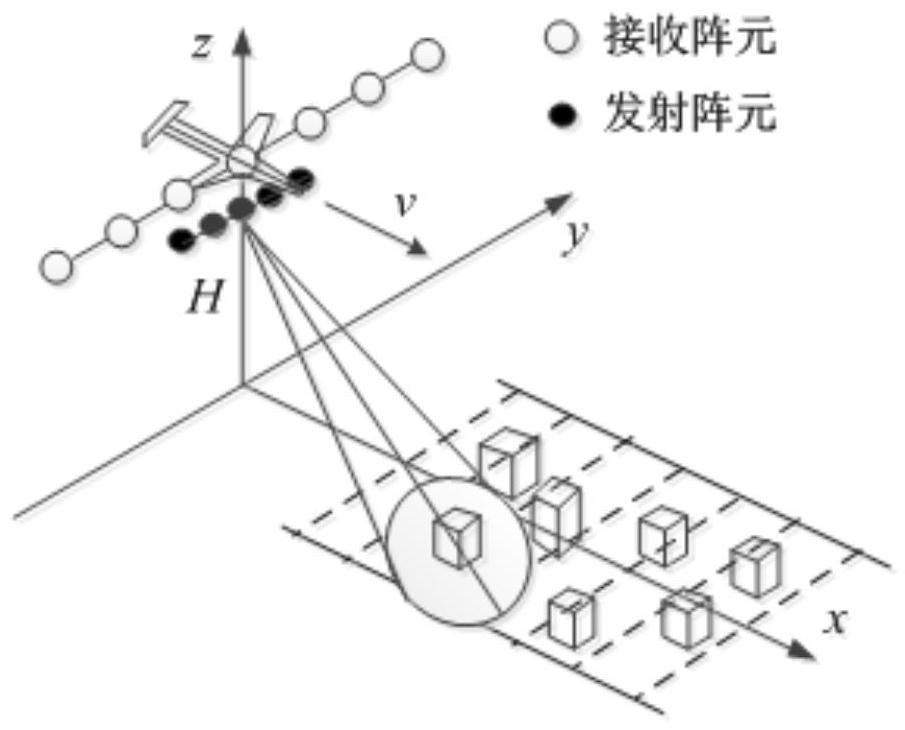A Sparse Antenna for Forward-Looking Array SAR System
A sparse antenna and array technology, applied in radio wave measurement systems, radio wave reflection/reradiation, instruments, etc., can solve problems such as large amount of computation, low echo signal-to-noise ratio, limited array sparsity, etc., to achieve improved The effect of transmitting gain and improving the signal-to-noise ratio
- Summary
- Abstract
- Description
- Claims
- Application Information
AI Technical Summary
Problems solved by technology
Method used
Image
Examples
Embodiment Construction
[0024] In order to make the technical solutions and advantages of the present invention clearer, the present invention will be further described below in conjunction with specific embodiments and drawings in the forward-looking array SAR system.
[0025] The invention is mainly applied to the radar imaging of the real-aperture array antenna, and is currently mainly applicable to the short-distance imaging platform of the high-frequency band array radar.
[0026] figure 1 A schematic diagram of the forward-looking array SAR system for earth observation is given. The carrier plane flies horizontally and uniformly along the direction of the observation strip at H meters above the observation strip, and the speed is v. The radar emission beam points to the front and bottom of the platform (using beam scanning to achieve effective coverage of the observation strip, figure 1 Examples of observations for the two-beam case are given). Assuming that the receiving and transmitting an...
PUM
 Login to View More
Login to View More Abstract
Description
Claims
Application Information
 Login to View More
Login to View More - R&D
- Intellectual Property
- Life Sciences
- Materials
- Tech Scout
- Unparalleled Data Quality
- Higher Quality Content
- 60% Fewer Hallucinations
Browse by: Latest US Patents, China's latest patents, Technical Efficacy Thesaurus, Application Domain, Technology Topic, Popular Technical Reports.
© 2025 PatSnap. All rights reserved.Legal|Privacy policy|Modern Slavery Act Transparency Statement|Sitemap|About US| Contact US: help@patsnap.com



